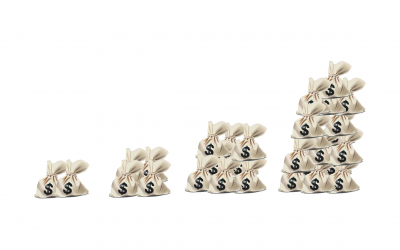Now that we know what pivot points are, let’s look at the different types of pivot points.
The pivot points are calculated depending on day’s high, low and closing price and gives equal weight to all these prices. The resistance and support levels are then calculated based on the pivot point levels with reference to high and low of the day. P= (H+L+C)/3
In this lesson, we will mainly look at the major types of Pivot Points and define each type in details.
They include;
- Standard Pivot Points
- Woodie’s Pivot Points
- Camarilla Pivot Points
- Fibonacci Pivot Points
- Lastly Demark Pivot Points.
Standard Pivot Pionts
This the key pivot points and the most common type of pivots that traders use. It is sometimes referred to as classical or floor pivot points. Standard pivot Point(PP) is the center or mid-point between the two support levels (S1, S2) and the two resistance levels (R1, R2).
To calculate standard pivot points(PP), simply get the high, low and close of the previous session and divide it by 3.
Let’s take a look;
Pivot Point (PP) = (High + Low + Close) / 3
To calculate the first support level (S1) , multiple the pivot value by 2, and then subtract that from the previous day’s high.
Support 1 (S1) = (PP Value X 2) – Previous High
To calculate the first Resistance level (R1); Multiply the Pivot value by 2, and then subtract the previous low.
R1 = (PP Value X 2) – Previous Low.
Now we have need to calculate the second level of support and resistance, S1 $R2.
On the pivot indicator, (S2) comes below (S1) and (R2) is above (R1).
Therefore, To calculate the second level of Support (S2), you get the difference between the High and Low and then subtract it from the PP value.
S2 = Pivot Value – (High – Low)
To calculate for R2, get the difference between the High and Low and then add it to the PP Value.
R2 = Pivot Value + (High – Low)
Camarilla pivot points
The Camarilla is calculated the same way as the standard pivot point however the support and resistance levels are calculated very different.
It uses the previous day’s close and range to calculate the support and resistance levels and calculates for 8 major levels (4S&4R) each multiplied by the multiplier.
Price tends to reverse to the previous days close as it approaches the support and resistance levels. You should buy or sell when price hits the 3rd support or resistance. If it goes through the 4th level then the trend is more strong.
R4 =C+ ((H –L) × 1.5000)
R3 =C+ ((H—L) × 1.2500)
R2 =C+ ((H—L) × 1.1666)
R1 =C+ ((H –L) × 1.0833)
S1 =C –((H—L) × 1.0833)
S2 =C—((H__L) × 1.1666)
S3 =C—((H—L) × 1.2500)
S4 =C—((H—L) × 1.5000)
C—closing price
H—high
L—low
Woodie’s pivot point
Its calculation gives more weight to the closing prices of the period and the way support and resistance levels are calculated are different.
R2= PP + High –Low
R1 = (2×PP)—Low
PP = (High +Low +2C)/4
S1= (2×PP) –High
S2 = PP—High +Low
C—closing price.
Fibonacci pivot points
Calculated in the same way as the classic or camarilla but the support and resistance levels are calculated using the Fibonacci retracement levels compared to pivot points levels.
R3= PP+ ((high—low) ×1.000)
R2 =PP + ((high—low) ×0.618)
R1 = PP + ((high—low) ×0.382)
PP = (H + L + C)/3
S1 =PP – (high—lwow) ×0.382)
S2 = PP – ( high—iow) ×0.618)
S3 = PP – (high—low) ×.1.000)
C—closing price
H—high
L—low
First calculate the pivot point using the standard method. Then multiply the previous day’s range which is the difference between the high and the low of the previous day with the corresponding Fibonacci levels of .382, .618, 1.000.
Add or subtract the figures from the pivot point to get the Fibonacci pivot point.
Why you make small profits and take big losses?
Major Reason why You make Small profits and take Big Losses in Forex is because you have lost market objectivity. This is due the influence of greed, fear, regret and revenge. You trade what you are thinking instead of what you see! The problem is that traders want to...
- Oh, bother! No topics were found here.



